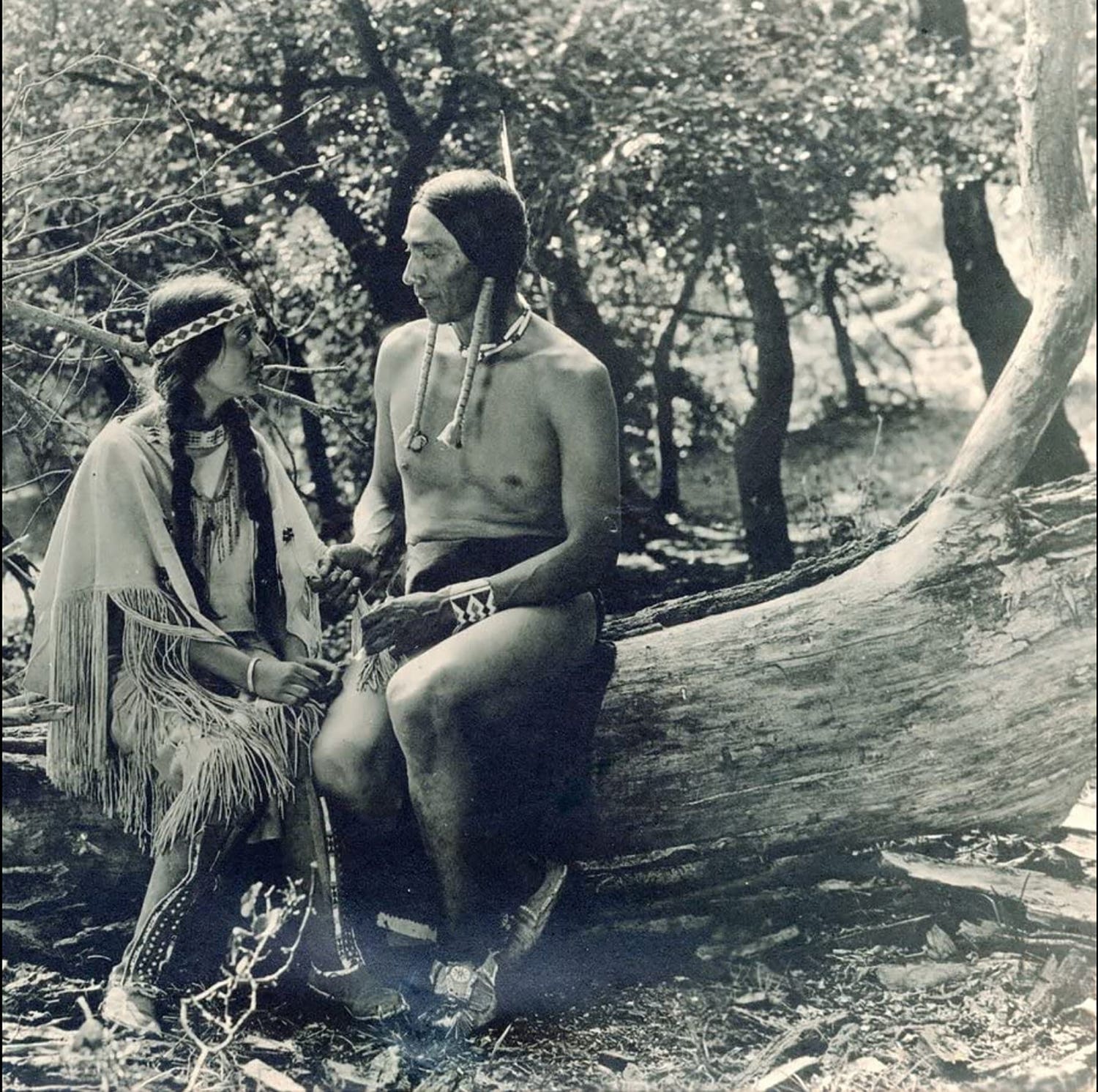
- Industry
Forgotten Hollywood: “The Daughter of Dawn”
Life on the plains was depicted with buffalo hunts, fight scenes and ceremonial dances – the latter only allowed in the movie as they were considered illegal by the government.
color:black;background:white’>According to the publication Indian Country Today, the film was written and directed by vaudevillian actor Norbert Myles based on a story by producer Richard Banks who started the Texas Film Company in 1916. On the script’s cover is the following inscription – “This story has been made possible by R.E. Banks, whose knowledge of the Indian, and of his traditions, was gained during the twenty-five years that he lived with them.” color:black;mso-bidi-language:HI’>Indian Country Today also describes the spartan production values – the film had just one cameraman and no lighting; the cast provided their own horses, tepees and costumes. Wild buffalo were plentiful at the location, and for their chase scenes, the cameraman had to crouch in a pit and shoot the buffalo and Indians passing overhead. color:black;mso-bidi-language:HI’>One artifact of note discovered by historians in the movie, reported in the Wichita Eagle, was a prominent tepee with yellow and black stripes which turned out to be a historical one known as the ‘Tipi with Battle Pictures,’ given by the Cheyenne to the Kiowa as a peace symbol. Paintings from one tepee were copied on to the next tepee and passed through generations as a history of the Kiowa, but the last one was lost, as native ways were stamped out by the federal government through military force. It was found in the historical society’s basement eventually. color:black;mso-bidi-language:HI’>When the picture was finished, newspaper reports indicated that there were screenings held in Los Angeles, Kansas City and Tulsa. The restored version was shown in 2012 at the deadCENTER Film Festival in Oklahoma City in the presence of well-known Native American actor Wes Studi.The film is now available on DVD and Blu-ray, with eight video documentaries produced by the Oklahoma Historical Society about the history of the film.

